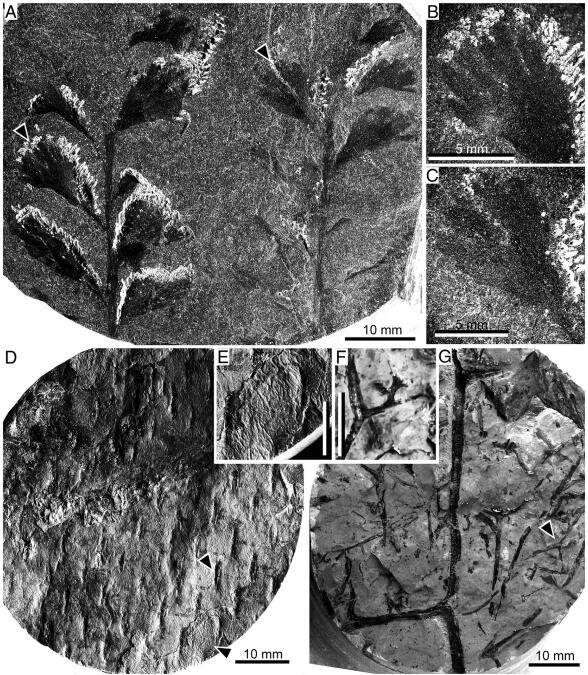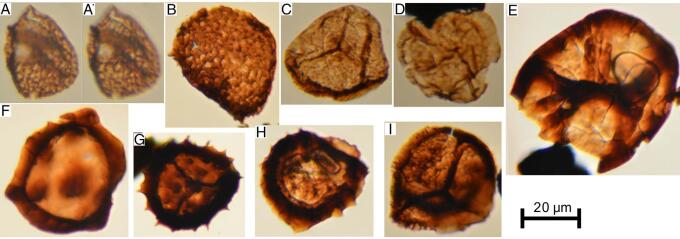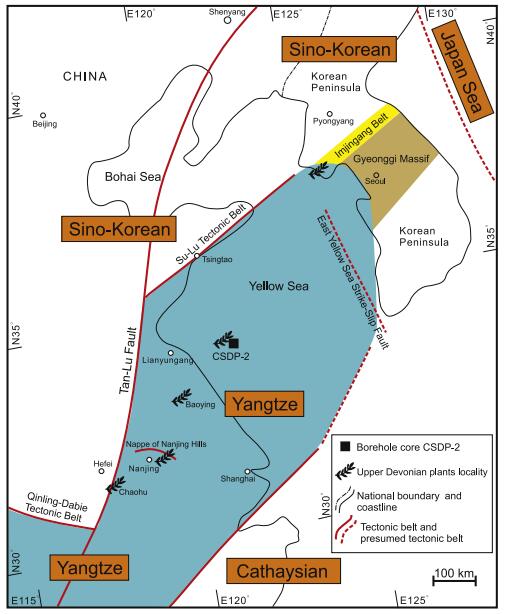The Yellow Sea shelf is rich in oil and natural gas. The development of Yellow Sea has important strategic significance for China's mineral resources. Qingdao Institute of Marine Geology carried several drilling in the Yellow Sea shelf and obtained up to 2800 m borehole core.
Recently, Profs XU Honghe and LU Huinan from Nanjing Institute of Geology and Palaeontology, Chinese Academy of Sciences and Dr. GUO Xingwei, Qingdao Institute of Marine Geology, carried stratigraphical and palaeontological study to the borehole core of the CSDP-2 well from the southern Yellow Sea. In this traditional study, Late Devonian plant remains, species of Archaeopteris and Sublepidodendron, and some representative miospores, are recognized from silty mudstone borehole core (well depth: 2063.1–2068.8 m). These plants have been thoroughly studied and are widely distributed in the Upper Devonian of southern China.
The plant-fossil-bearing borehole core correlates to the Upper Devonian (Famennian) terrestrial to shallow-marine Wutung Formation of southern China, lower Yangtze Plate. Moreover, the Late Devonian megaplant and miospore records palaeogeographically distinguish the Sino-Korean and Yangtze Plates. The northeastern boundary of the Yangtze Plate is discussed. It is proposed that the northeastern end of the Yangtze Plate probably extends to the Imjingang Belt and the Gyeonggi Massif, the central part of the Korean Peninsula.
The paper is published as below: Guo X-W, Xu H-H*, Zhu X-Q, Pang Y-M, Zhang X-H, Lu H-N, 2017. Discovery of Late Devonian plants from the southern Yellow Sea borehole of China and its palaeogeographical implications.Palaeogeography, Palaeoclimatology, Palaeoecology.

Late Devonian plants, species of Archaeopteris and Sublepidodendron, from the southern Yellow Sea borehole core (well depth: 2063.1–2068.8 m).

Some representative Late Devonian miospores from the southern Yellow Sea borehole core (well depth: 2063.1–2068.8 m).

Discover of the Upper Devonian in the Yellow Sea suggesting the northeastern end of the Yangtze Plate probably extends to the central part of the Korean Peninsula.
Download:
